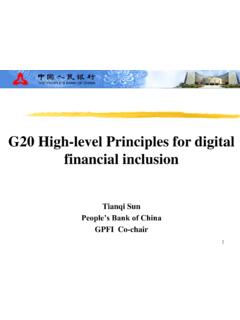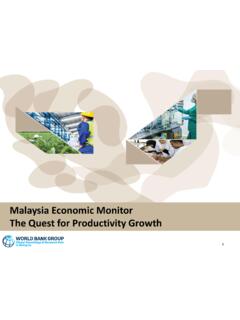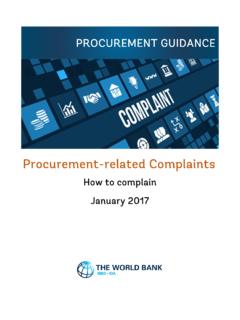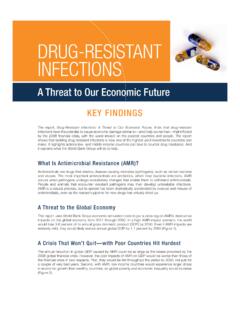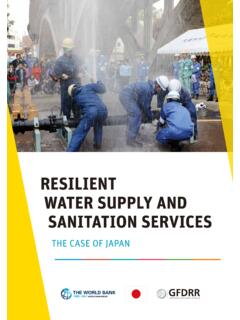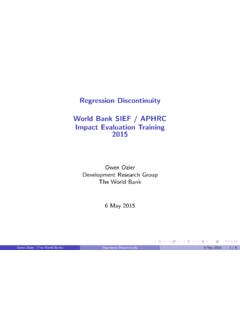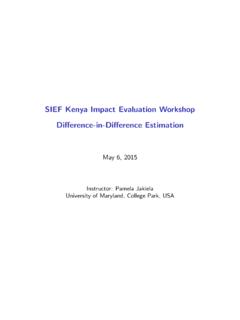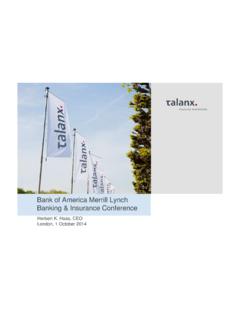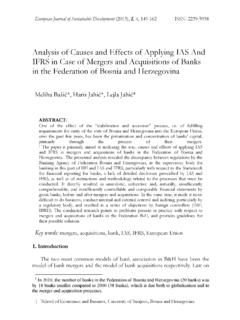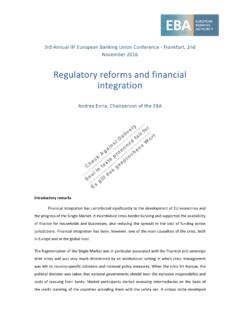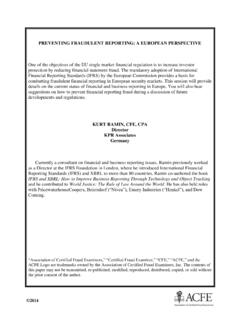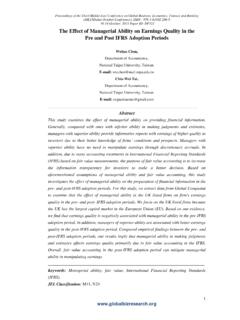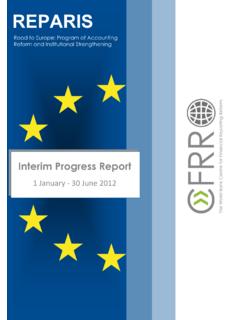Transcription of IFRS 9 and NPLs – impact on banks
1 ifrs 9 and NPLs impact on banks Tony Clifford, EYAgendaPage 2 Measurement ifrs 9 impairment model impact on European banks Issues specific to NPLs Disclosure The new ifrs 7 requirements Issues specific to NPLsIFRS 9 impairment model - general approachPage 3 Change in credit risk since initial recognitionImprovement DeteriorationLoss allowance updated at each reporting dateLifetime expected credit losses criterionInterest revenue calculated based on12-month expected credit lossesLifetime expected credit lossesLifetime expected credit lossesCredit risk has increased significantly since initial recognition (individual or collective basis)Effective interest rate on gross carrying amountEffective interest rate on gross carrying amountEffective interest rate on amortised costStage 1 Stage 2 Stage 3 Start here (with exceptions)+Credit-impairedHow does stage 3 compare to IAS 39 (1)?Page 4 Criteria are nearly the same: When one or more events have had a detrimental impact on estimated cash flows: Significant financial difficulty of borrower Default Lender has granted a concession they would not otherwise consider Probable that borrower will enter bankruptcy An IAS 39 impaired asset was one on which a loss was expected, whereas ifrs 9 stage 3 asset could include ones that have dafaulted, or are expected to default, even if no loss is expected because they are adequately does stage 3 compare to IAS 39 (2)?
2 Page 5 Measurement is not the same: Need to consider multiple scenarios and probability weight them: , i) work out; ii) restructure; iii) sell collateral; iv) sell asset Impairment Transition Resource Group ( ITG ) on 11 December 2015 made it clear that you should include scenarios in which you expect to sell the loan Interest accrual Requirement is now clear Write off Requirement is now clearImpact of ifrs 9UK ifrs Banking conference - 17 November 2014 Page 6 Impairment(in bnbeforetax)-0,1-0,3-0,4-0,7-0,8-1,0-1,3 -1,5-1,9-2,2-2,9-3,1-3,3-4,3 HSBCL loydsBNPPI ntesaUnicreditSantanderBarclaysUBSINGRBS DBS tandard CharteredBBVATDI mpact of ifrs 9 Page 7 Example of application of ifrs 9: HSBC (overall increase of 31%) impact of ifrs 9 as at 31 December 2017 (1)Page of ifrs 9 impairment Billions of EurosMESS tage 3 Stage 2 Stage 1 impact of ifrs 9 as at 31 December 2017 (2)Page 9 The previous slide is based on data published at the time this deck was compiled Where unclear, the movement has been classed as stage 2 Note the significant differences: HSBC did not separately disclose the effect on stages 2 and 3.
3 HSBC separated the effect of using multiple economic scenarios. Most of this is a non-modelled adjustment for the effect on the UK of Brexit Most of the impact on Barclays ( B Euros) is due to its significant credit card portfolio BNP Paribas, like many banks , had not yet provided more detail Most of Intesa Sanpaolo s increase was due to expected sales of NPLs. IAS 39 allowances were mostly based on assumption of hold to collect. Intesa Sanpaolo did not separate stages 1 and 2 impact of ifrs 9, more generallyPage 10 Most banks have now communicated an ifrs 9 transition impact estimate, showing an increase in allowances, although the level of detail varies. Also, the components of the impact vary, depending on the activities of the bank and its previous accounting policies. The impact also reduces capital, although the impact on capital varies, based on whether the bank applies an IRB or standardised approach and whether the transition rules are applied.
4 Application requires sound data and use of economic forecasts Going forward: Allowances will depend on policies adopted and will involve more subjective assessment. And will be more volatile. There is therefore potential for diversity in application There should be a greater level of interaction between finance, risk management than before, and risk management data should improve. Much more disclosure is disclosure requirements Page 11 Information about credit risk management and how this relates to ECL measurement, including methods, assumptionsand inputs. Quantitative and qualitative information to allow users to evaluate the ECLs, including changes in techniques, assumptions and effect and the reasons for changes. Information about credit risk exposures, including credit risk concentrations Reconciliation, by class of asset and by stage, of opening to closing allowance, and narrative of how affected by changes in gross level of loans Effect of modifications Effect of collateral Amounts outstanding where loans are written off but still being enforced Credit quality of assets by credit risk grades, by stage, by classIssues specific to NPLsPage 12 NPLs is not an ifrs term.
5 Not exactly the same as Stage 3 Interest recognition for stage 3 Write offInterest incomePage 13 For an asset in stage 3, interest is recorded in income based on the EIR applied to the gross amortised costless the impairment allowance. As with IAS 39, there is no concept of suspended interest The ITG in December 2015 was asked to clarify how interest income should be reflected in the notes to the accounts. The example was of a bank with an asset with a cost of $100, an EIR of 10% and ECLs of $60. A year later, no interest is received and the expected cash flows are unchanged. The amortised cost becomes $44 ($40 + $40*10%). Three approaches were suggested:ABCG ross carrying amount110104100 Loss allowance(66)(60)(56)Amortised cost444444 The ITG agreed that only approach A is compliantWrite off Page 14 ifrs 9 says that an entity shall reduce the gross carrying amount of a financial asset when the entity has no reasonable expectation of recovering a financial asset in its entirety or a portion thereof.
6 The gross amortised cost and the impairment allowance are both removed from the financial statements A write off constitutes a derecognitionevent This may mean that write off policies are more aligned than under IAS 39 But practice, especially regarding partial write offs, is still emergingEY| Assurance | Tax | Transactions | AdvisoryErnst & Young LLP Ernst & Young LLP. Published in the Rights UK firm Ernst & Young LLP is a limited liability partnership registered in England and Waleswith registered number OC300001 and is a member firm of Ernst & Young Global & Young LLP, 1 More London Place, London, SE1

